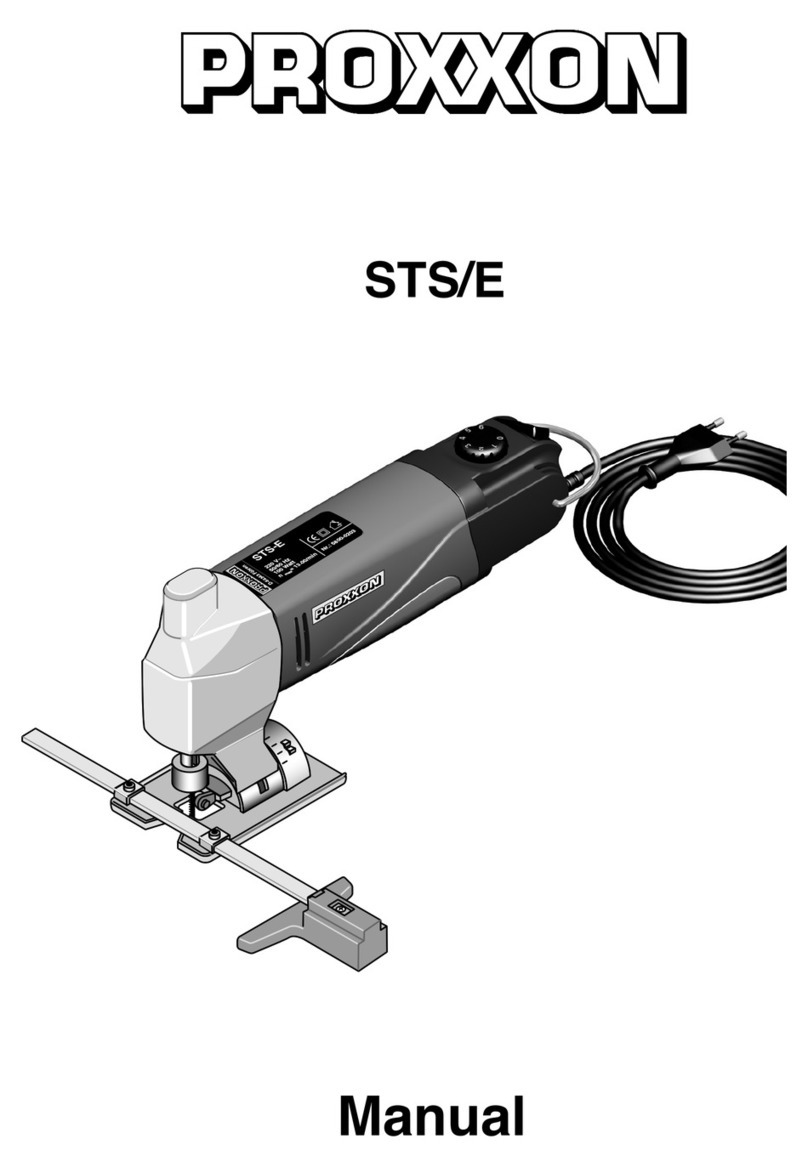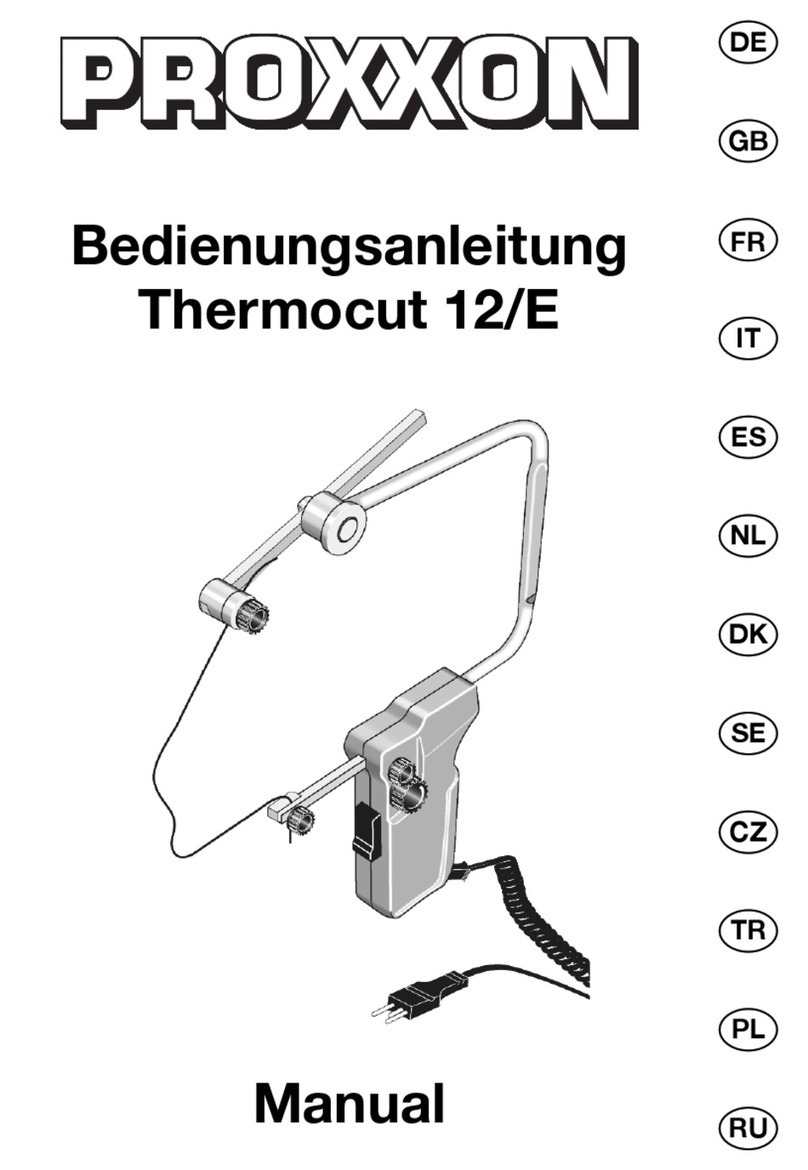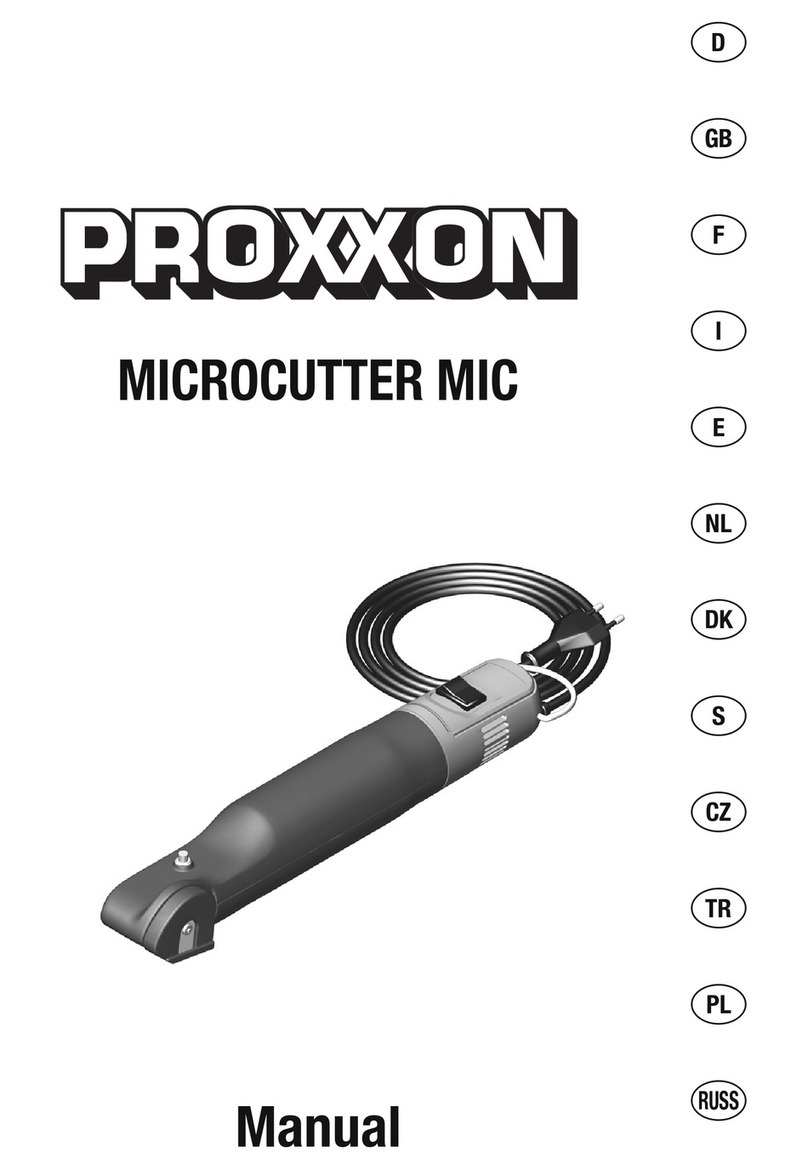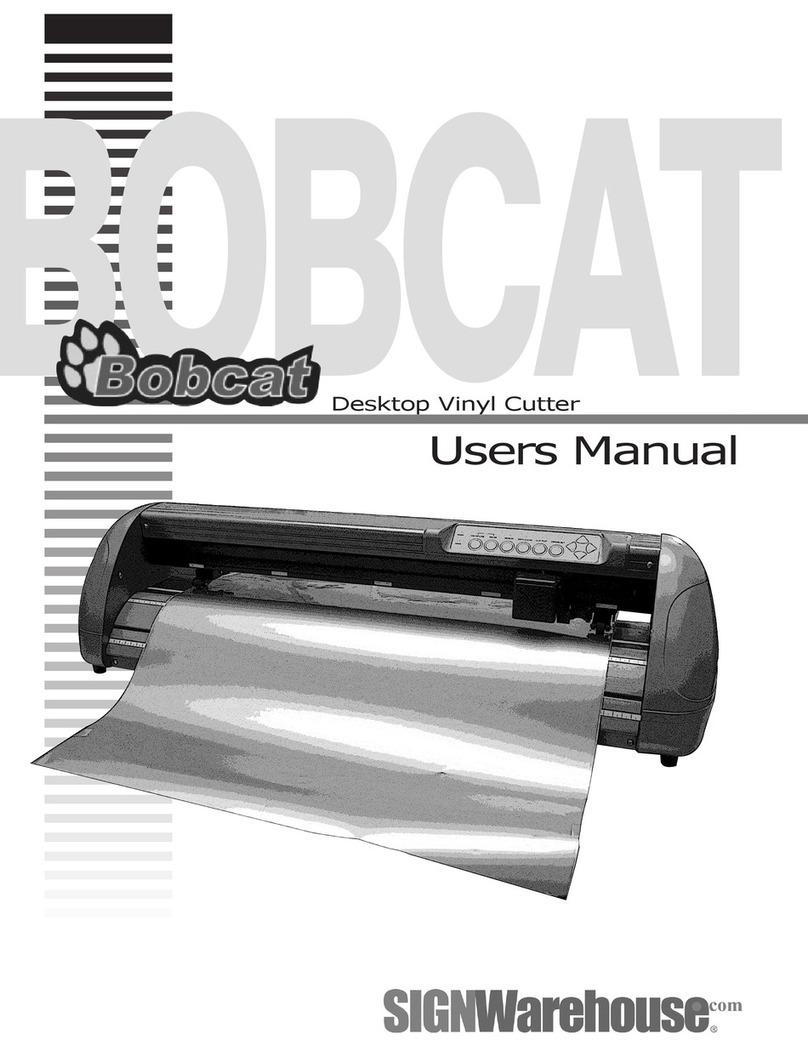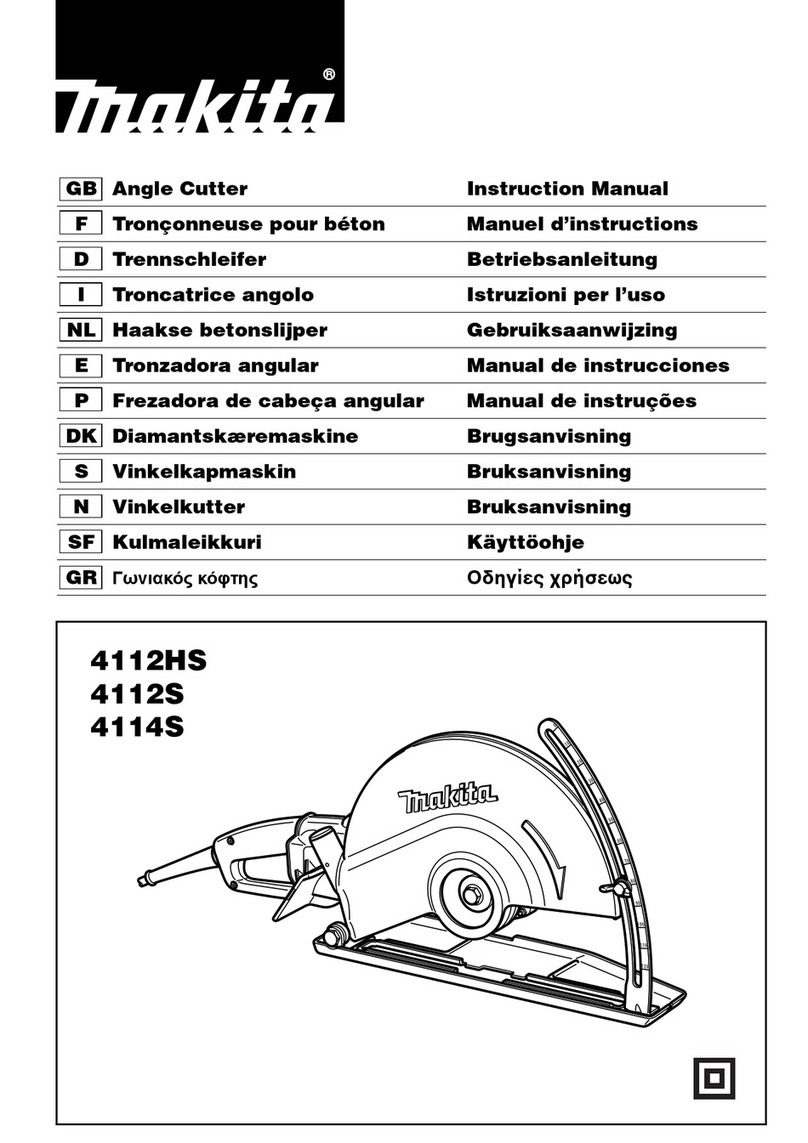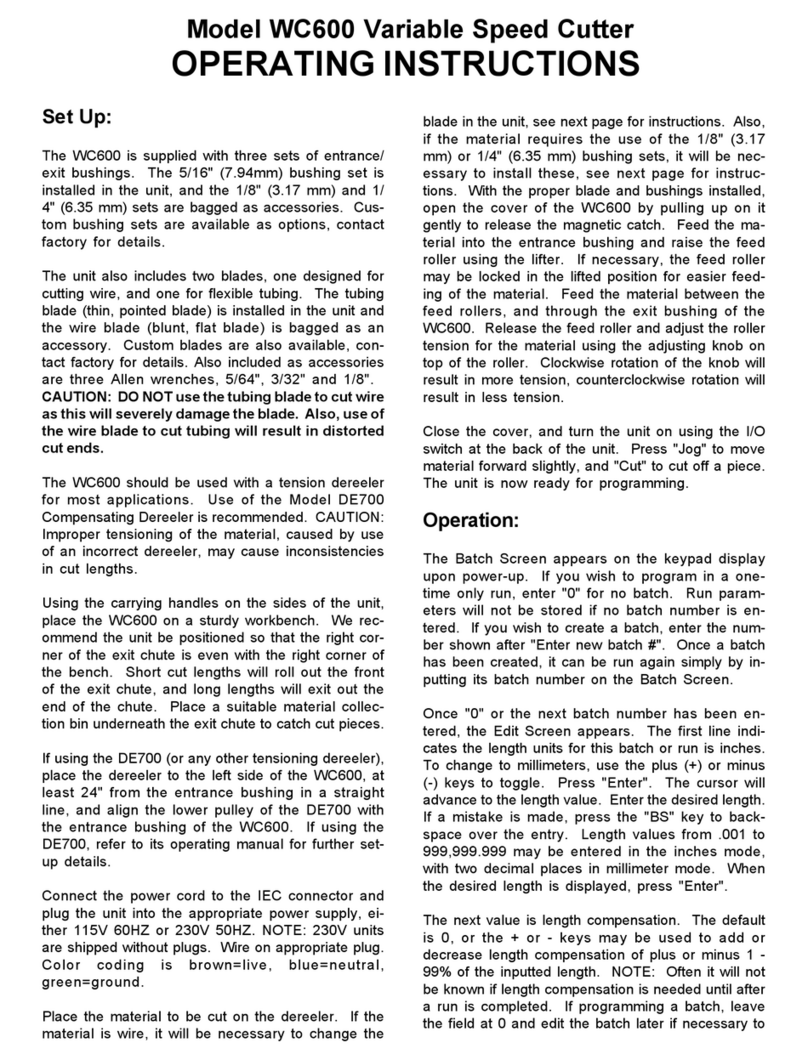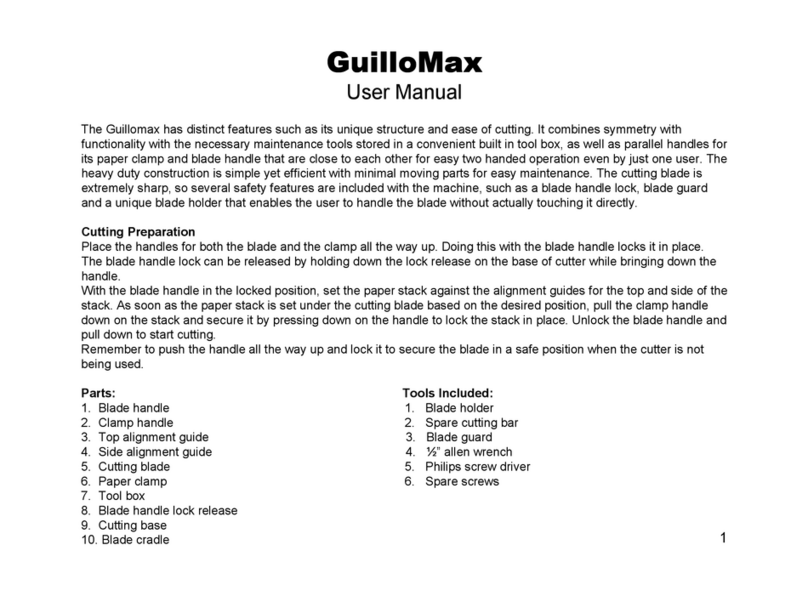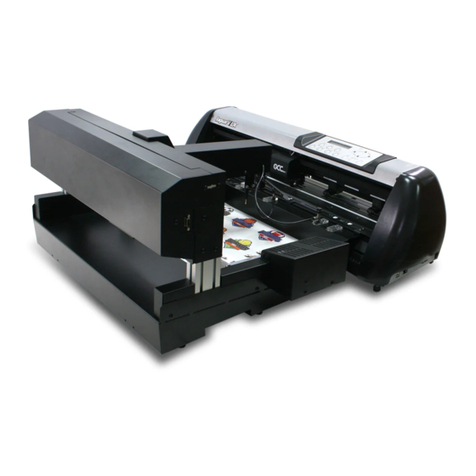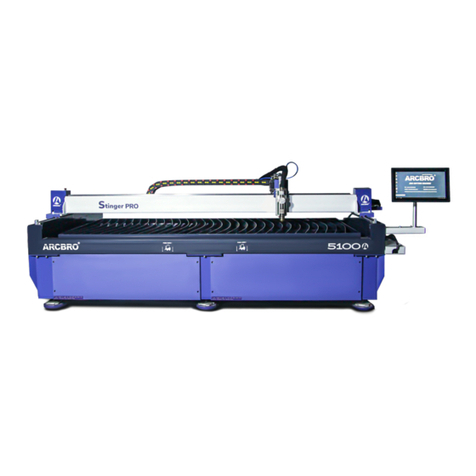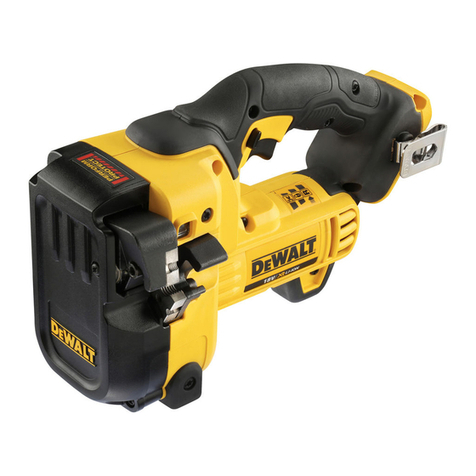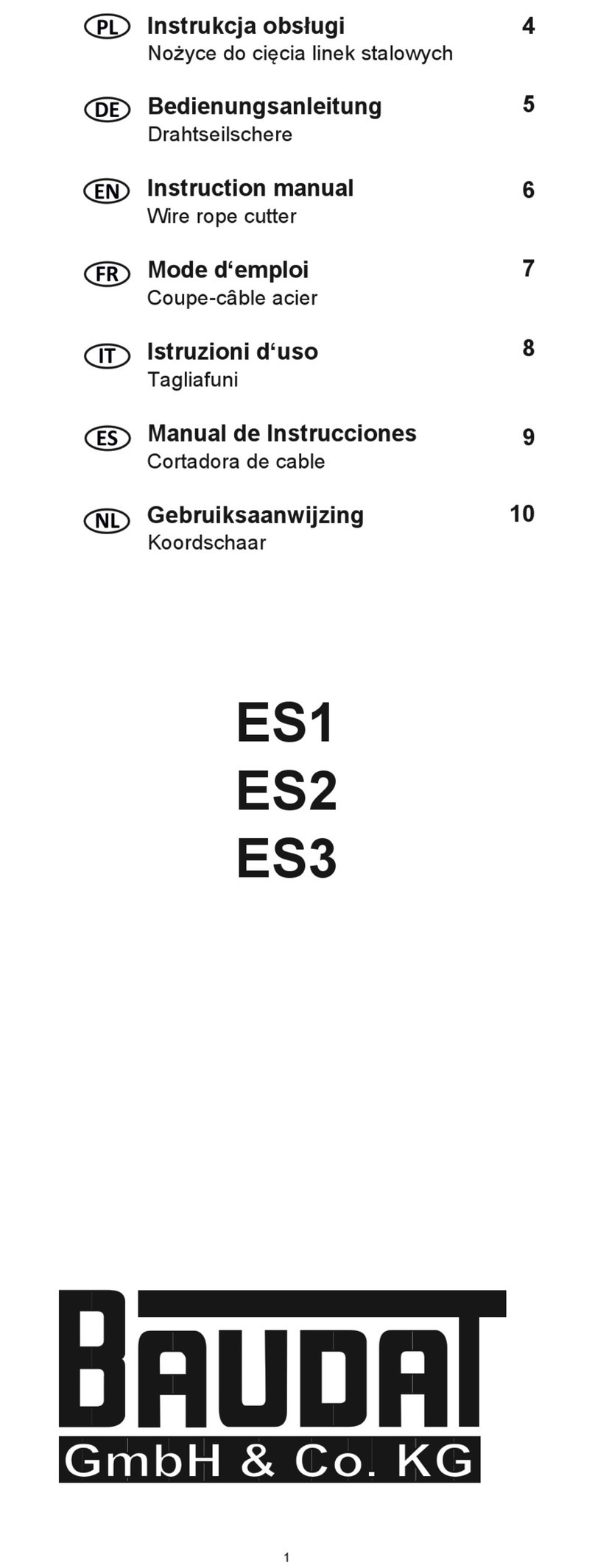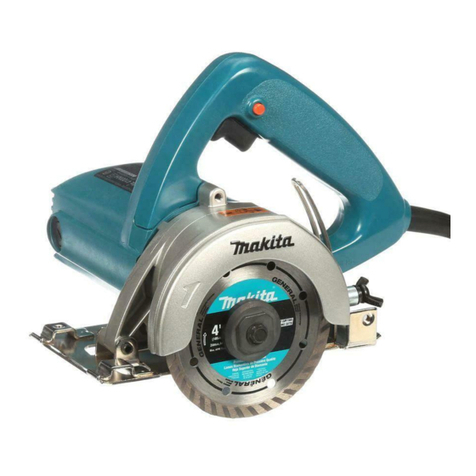Note:
It is normal that the wire extends somewhat
after being heated for the first time. Stretch the
wire slightly by the first heating and tension it
again. The wire will now retain its length.
11. Adjust the temperature with the regulator 2.
The table on the front of the device serves
as a guide. The best way to find the ideal
temperature is to try different temperatures
yourself. For simple, straightforward cuts
you use a high temperature, for complicated
shapes a lower temperature. Please note
that too high temperatures will cause untidy
edges.
12. Now move the workpiece through the wire
with a light pressure and even speed. Be
aware that too high pressure in the direction
of the cut when cutting complicated shapes
will tend to bend the wire.
Miter cutting
Miter cutting can be done in two ways with the
THERMOCUT: by adjusting the spool carrier on
the overarm or with the adjustable angle gauge.
Adjusting the spool carrier: loosen the screws
1and 2(Fig. 3) and select the required angle by
sliding the spool carrier. Tighten the screw 1
again and tension the wire as usual.
Note:
Adjusting the spool carrier will lengthen the
heated part of the wire and thus increase the
electrical resistance. The temperature must be
adjusted accordingly.
Working with the stop: Select the required
miter on the angle stop and secure the adjust-
ment with the screw 1(Fig. 4). Move the exten-
sion 2so that you can pass the cutting wire
without difficulty. Press the workpiece against
the stop and guide the stop along the slot 3.
Note: The stop can be fixed for parallel cutting.
Turn the screw 1 (Fig.5) to clamp the stop in the
slot. Guide the workpiece past the cutting wire
along the stop.
Important hints:
– When cutting double miter (e.g. roof), don’t
remove the cut off part after the first cutting.
Use it as an underlay for the second cut.
– The wire has a higher temperature at the exit
side of the workpiece, which may cause sur-
face melting. To prevent this, the wire can be
cooled by blowing on it.
– Small sections of long profiles can best be cut
by laying a waste piece 1(Fig. 6) between the
stop and the work piece and then cutting
against the stop. The cutting wire then cuts
into the waste piece and the edges remain
clean.
– You can make a simple device yourself for
cutting circular segments. Fix a drawing-pin at
the center of the required circle on the working
table with a piece of tape. Fix the workpiece
onto the pin and turn the workpiece around
the pin (Fig. 7).
– The cutting wire normally breaks above the
guide bushing. Insert the wire a few inches
further in the lower wire guide and fasten it
again at regular intervals to prevent the wire
from breaking.
Cleaning the device
Clean the wire and the bushing regularly to
prevent unnecessary evaporation of polystyrene
residue. Caution: First switch off the device!
- 4 -

